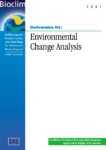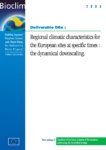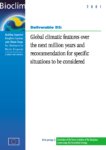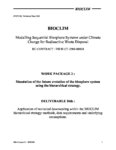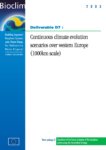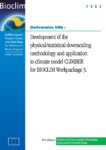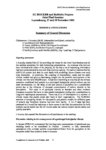BIOCLIM: Modelling sequential biosphere systems under climate change for radioactive waste disposal
The BIOCLIM project aimed to provide a scientific basis and practical methodology for assessing the possible impacts of long-term climate change on the safety of radioactive waste repositories in deep geological formations.
Overview
Project Dates: 01/10/2000 – 31/12/2003
Project Status: Finished
Project Website: http://www.andra.fr/bioclim
The BIOCLIM project provided a practical method for the assessment of the long- term impacts of climate change on deep geological repositories for spent fuel and radioactive waste. The project was applied to repository locations across various European areas and were developed to allow efficient downscaling of global model output that applied to specific regions. The results allowed researchers to compare the predictability of the different climate models for the same future climate change, with variations in insolation and atmospheric greenhouse-gas concentrations being taken into account.
Two complementary strategies provided representation of future climate change analyses of extreme situations and a continuous simulation over the next 1,000,000 years. Climate and vegetation models of different spatio-temporal scales were used to simulate the time series of climate and vegetation to derive the nature of the human environments (i.e. the biosphere systems) through which radionuclides, coming from a repository, may transfer to humans. These exposure and migration pathways were described for three selected biosphere systems using two different approaches – a discrete approach and a more innovative transitional one.
Objective
The main aim of the BIOCLIM project was to develop a scientific basis with which to assess the safety of radioactive waste repositories in deep formations, with regard to the possible long-term impacts of climate change.
During the project, five separate and sequential work packages were undertaken:
(i) Work package 1: consolidated the needs of the European agencies of the consortium and summarised how environmental changes had been treated to date in performance assessments.
(ii) Work Packages 2 and 3: developed two innovative and complementary strategies for representing time series of long-term climate change using different methods to analyse extreme climate conditions, and a continuous climate simulation betond the next glacial-interglacial cycle (the integrated strategy).
(iii) Work package 4: explored and evaluated the potential effects of climate change on the nature of the biosphere systems.
(iv) Work package 5: disseminated the information and results obtained from the three-year project among the international community for further use.
Researchers employed a hierarchical strategy consisting of three types of climate model for deriving the climatic changes for specific time periods. These model types involve an Earth-system Model of Intermediate Complexity (EMIC), a General Circulation Model (GCM) and a regional climate model. In particular for the EMIC, innovative features such as atmospheric forcing, ice sheet development and ocean changes were also developed. Application of these hierarchical models generated global data on climate and vegetation changes concerning different time segments over very long time scales.
Three different statistical approaches were developed in order to allow efficient downscaling of global model output to more suitable scales for specific European regions. All key mechanisms for long-term climatic variations were integrated in two differently structured dynamic models. Comparison between model results allowed researchers to explore the predictive potential of different climate models for the same future climate change. Within this context, variations in parameters, such as insolation and atmospheric greenhouse-gas concentrations, were taken into account in order to check whether long-term climate followed different patterns of change. The application of the climate models provided valuable information for specifying model requirements of the post-closure radiological performance assessment of radioactive waste repositories. This allowed the development of a comprehensive methodology for biosphere system description in the long-term.



